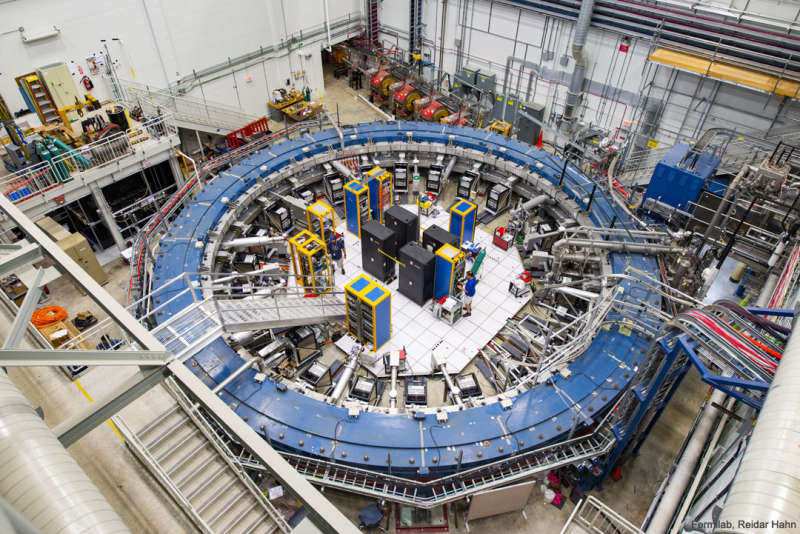Credit & Copyright: Fermi National Accelerator Laboratory;
Photographer: Reidar Hahn
Explanation:
How fast do
elementary particles wobble?
A surprising answer to this seemingly
inconsequential question came out of
Brookhaven National Laboratory in
New York,
USA in 2001, and indicated that the
Standard Model of Particle Physics, adopted widely in physics,
is incomplete.
Specifically, the
muon, a particle with similarities to a heavy
electron,
has had its relatively large wobble
under scrutiny in a series of experiments known as
g-2 (gee-minus-two).
The Brookhaven result galvanized other experimental groups
around the world to confirm it, and pressured theorists
to better understand it.
Reporting in last week, the most sensitive
muon wobble experiment yet,
conducted at
Fermi National Accelerator Laboratory
(Fermilab) in Illinois and
pictured here,
agreed with the Brookhaven result.
The unexpected
wobble rate may
indicate that an ever-present sea of
virtual particles includes types not currently known.
Alternatively, it
may indicate that flaws exist in
difficult theoretical prediction
calculations.
Future runs at
Fermilab's g-2 experiment will further
increase precision and, possibly, the statistical difference between the
universe we measure and the
universe we understand.
1999 2000 2001 2002 2003 2004 2005 2006 2007 2008 2009 2010 2011 2012 2013 2014 2015 2016 2017 2018 2019 2020 2021 2022 2023 2024 2025 |
Yanvar' Fevral' Mart Aprel' Mai Iyun' Iyul' Avgust Sentyabr' Oktyabr' Noyabr' Dekabr' |
NASA Web Site Statements, Warnings, and Disclaimers
NASA Official: Jay Norris. Specific rights apply.
A service of: LHEA at NASA / GSFC
& Michigan Tech. U.
|
Publikacii s klyuchevymi slovami:
particle physics - fizika elementarnyh chastic
Publikacii so slovami: particle physics - fizika elementarnyh chastic | |
Sm. takzhe:
Vse publikacii na tu zhe temu >> | |
